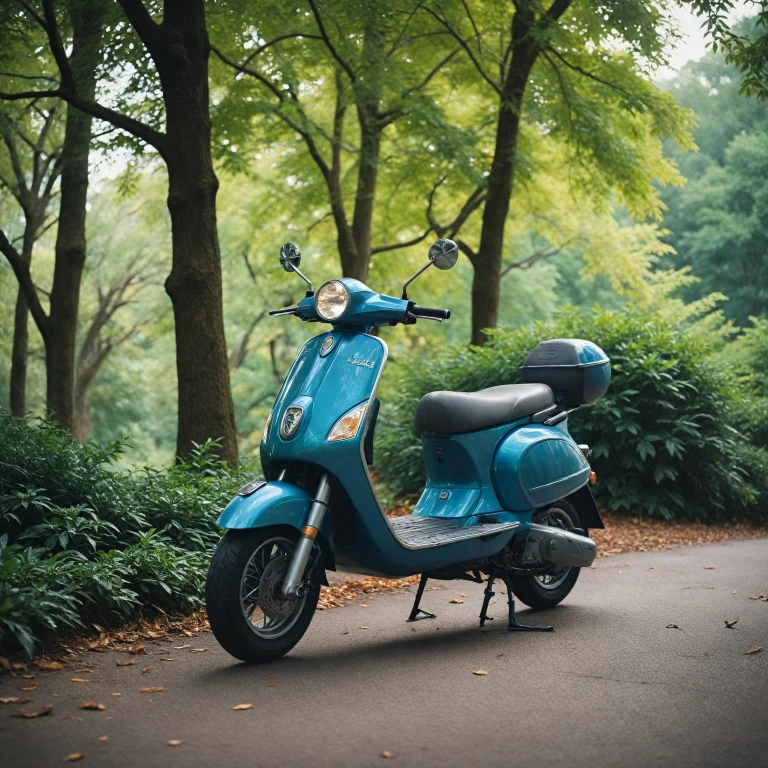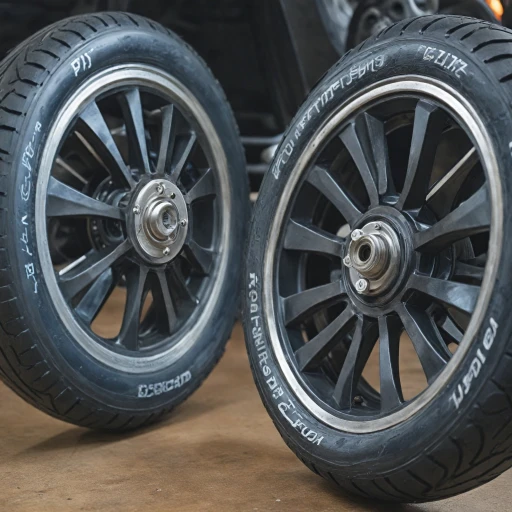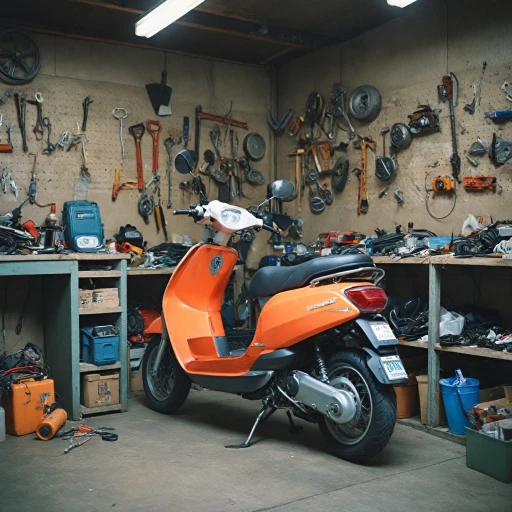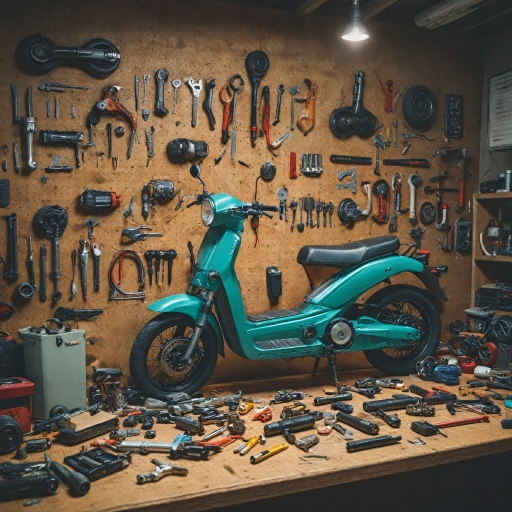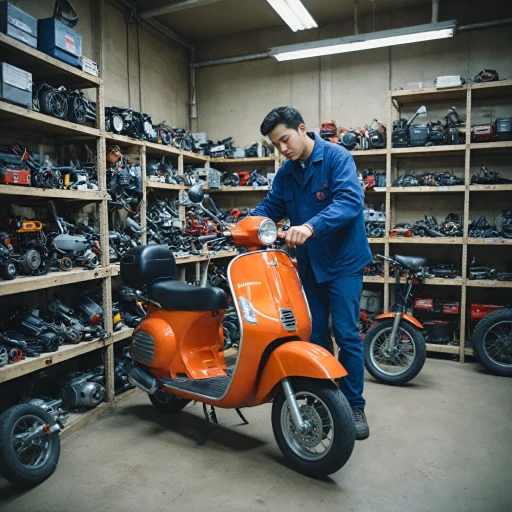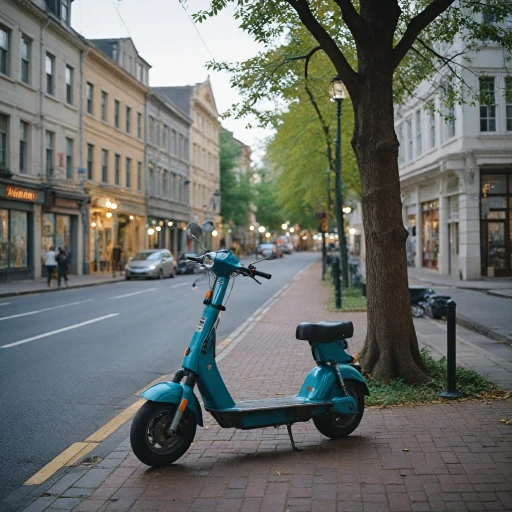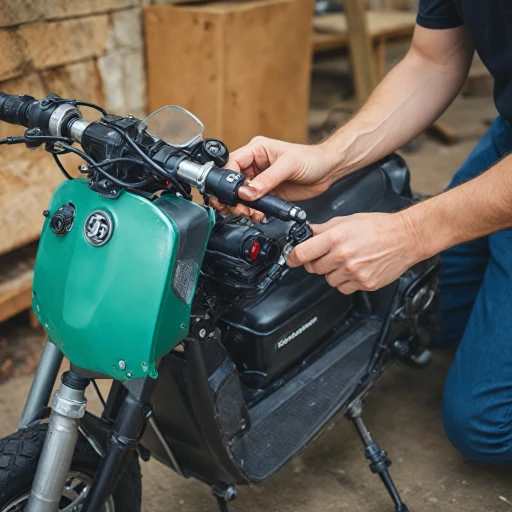
Understanding Your Scooter's Battery
Grasping the intricacies of your electric scooter's battery is the first step toward maximizing its lifespan. Let's dive into some fundamental aspects that can enhance your understanding and help you maintain its performance.
The Heart of Your Scooter: Lithium-Ion Batteries
Most electric scooters today rely on lithium-ion batteries. These batteries are renowned for their durability and efficiency, offering impressive capacity and charging speed. Remember that proper maintenance is crucial for long-term battery performance. Regularly checking the battery's health can be beneficial to avoid unexpected drops in performance.
Battery Capacity Essentials
The term 'battery capacity' might sound technical, but it's essentially the amount of energy a battery can store. This capacity is often measured in watt-hours (Wh). Understanding your battery's capacity can give you a clear picture of how far your scooter will go on a single charge, and can help in planning your charging sessions effectively.
Understanding Charging Time and Efficiency
Electric scooter batteries generally take a few hours to reach a full charge, but this can vary based on the scooter's specifications and the battery charger's capacity. Consider the charging port and the power output of the charger you use, as these factors influence charging time. Opt for a charger suited to your specific battery to ensure efficient energy transfer.
In your quest to maximize battery life, remember that understanding these basics is only the beginning. Practicing optimal charging and avoiding common mistakes are also keys to extending your scooter's battery life.
Optimal Charging Practices
Best Practices for Charging Your Electric Scooter
To get the most out of your electric scooter's battery life, it's crucial to adopt optimal charging practices. This not only helps maintain the battery's capacity but also ensures your scooter is ready to go when you need it.
- Use the Right Charger: Always use the scooter charger that comes with your electric scooter or one recommended by the manufacturer. Using an incompatible charger could harm the battery, reducing its longevity.
- Charge Regularly: Keeping your battery charged regularly is beneficial. Don't wait for the battery to be completely drained before plugging in the charger. Charging electric scooters after every trip can help avoid deep discharges, which can degrade lithium ion batteries.
- Avoid Overcharging: While many modern scooters come with overcharge protection, it's good practice not to leave your scooter plugged in for extended hours after it’s fully charged. A battery fully charged all the time can reduce battery life over time.
- Follow Charging Time Recommendations: Refer to the manufacturer's instructions for optimal charging time. Typically, a full charge might take several hours, depending on the battery capacity of your scooter.
- Mind the Charging Port: Before you charge your scooter, ensure no debris is in the charging port, as this could affect the charging process. Keeping the port clean helps maintain an efficient charge.
Adhering to these charging practices will not only extend the battery life of your electric scooter, but will also ensure your journeys are always powered reliably.
Common Charging Mistakes to Avoid
Charging Blunders to Sidestep for Longevity
To lengthen your electric scooter's battery life, it's essential to be aware of common charging missteps that can hamper performance and reduce overall battery capacity. Electric scooters, primarily utilizing lithium-ion batteries, are built for efficiency. Yet, charging errors remain a widespread concern.
- Overcharging: A temptation many fall into is leaving the battery on the charger for extended periods, even after it's fully charged. Continuously charging past the battery's full capacity can lead to overheating, a common but avoidable pitfalls when it comes to scooter charging.
- Neglecting Optimal Charging Time: Charging electric scooters shouldn't be done hastily. Fast charging can be handy, but it's not always the best approach. Instead, ensure you allocate appropriate time—generally, about 4 to 6 hours—for a healthy charge depending on the scooter charger's specifications and battery life.
- Using Incompatible Chargers: Many are unaware that using the incorrect charger can drastically affect performance. Chargers vary in voltage output, and a mismatch can lead to inefficiencies or even damage. It's prudent to stick with the manufacturer-recommended scooter chargers.
- Ignoring the Charging Port: The battery charging port should be checked regularly for debris or damage to avoid costly repairs or replacements. Proper maintenance of this simple component is crucial for optimizing the charge scooter process.
- Charging in Extreme Conditions: As explored in more depth here, temperature plays a pivotal role in charging practices. Avoid charging in extremely hot or cold conditions, which can affect the scooter battery's longevity.
To avoid these issues and maximize your battery fully, implement these adjustments to your routine. For a comprehensive guide on ensuring your electric scooter is safely secured when charging outside, check out our guide on scooter safety.
The Role of Temperature in Charging
The Impact of Temperature on Battery Performance
Temperature plays a crucial role in the charging efficiency and overall lifespan of your electric scooter's battery. Understanding how temperature affects your scooter's battery can help you optimize its performance and longevity.
Extreme temperatures, whether hot or cold, can significantly impact the charging process and battery capacity. Lithium-ion batteries, commonly used in electric scooters, are particularly sensitive to temperature fluctuations. Charging your scooter in very cold or hot environments can lead to reduced battery life and performance issues.
- Cold Temperatures: Charging in cold conditions can increase the charging time and reduce the battery's ability to hold a full charge. It's advisable to charge your scooter in a warmer environment to ensure the battery reaches its full capacity.
- Hot Temperatures: Excessive heat can cause the battery to overheat, leading to potential damage and a decrease in battery life. Avoid charging your scooter in direct sunlight or near heat sources to prevent overheating.
To maintain optimal battery health, aim to charge your scooter in a temperature-controlled environment. This practice will not only enhance the charging efficiency but also extend the overall lifespan of your battery.
Regularly check the temperature of your battery and charging port during the charging process. If you notice any unusual heat, disconnect the charger immediately to avoid potential damage. By being mindful of the temperature, you can ensure your electric scooter remains charged and ready for use.
Portable Charging Solutions
Exploring Portable Charging Options
When you're always on the go with your electric scooter, finding ways to keep it powered can be crucial. Investing in a portable charging solution can provide flexibility and convenience to your daily rides. Here’s what you need to consider:- Portable Chargers: These small, lightweight chargers can be a lifesaver in situations where traditional outlets aren't accessible. However, ensuring that they are compatible with your scooter's lithium ion batteries is essential. Look for chargers that match the voltage and amp specification to avoid potential damage.
- Charging Ports: Not all electric scooters have the same charging port. Double-check compatibility with your equipment before purchasing a portable charger. High-quality models usually provide a universal charging port which can be advantageous.
- Battery Capacity and Charging Time: With portable solutions, the time it takes for a scooter battery to become fully charged may vary. Be mindful of the capacity and charging time. Some portable chargers offer fast charging capabilities, which might reduce downtime drastically.
- Rechargeable Power Banks: Similar to those used for mobile devices, power banks designed for scooters can be helpful. These are particularly useful if they have enough output power to charge your scooter battery fully. Always check the power bank’s capacity in relation to the scooter charger specs.
- Safety Considerations: Properly check the condition of your portable chargers regularly and avoid overcharging. Using a charger with damaged wires or ports can be quite risky. Keep an eye out for any unusual battery behavior as these can be subtle signs that the battery life is waning.
